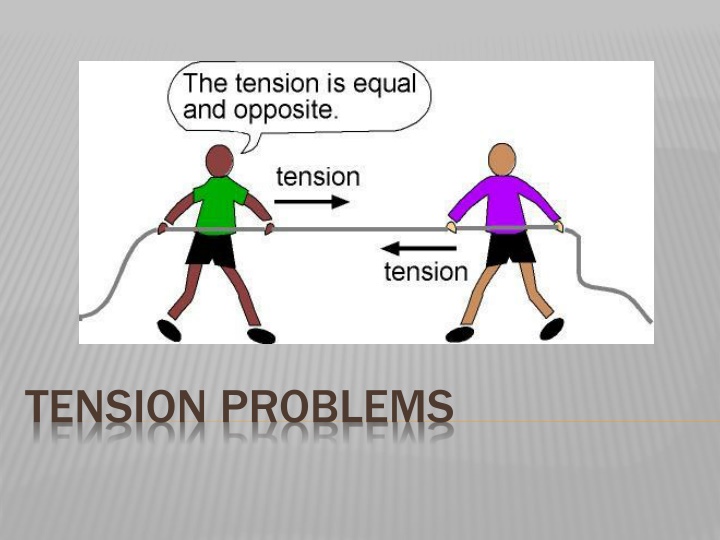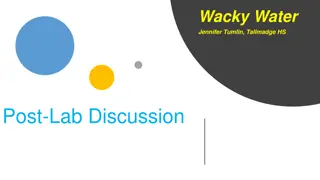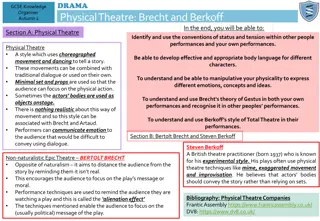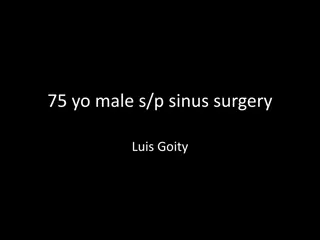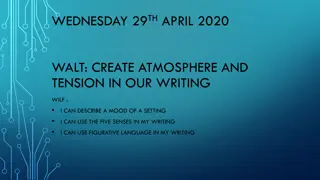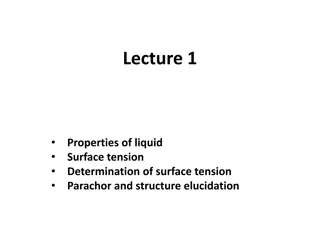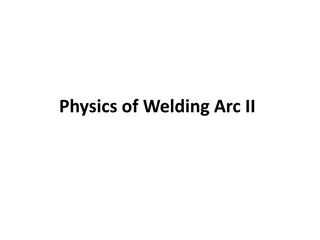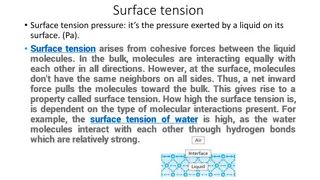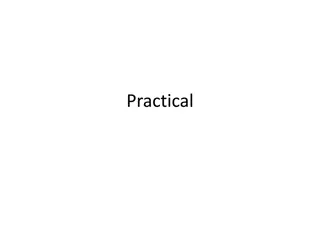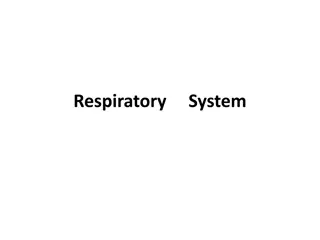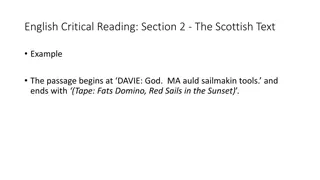TENSION PROBLEMS
Learn how to solve tension problems in physics by drawing free body diagrams, applying force equations, and understanding tension forces in systems with ropes and pulleys. Practice solving problems involving tension forces between connected blocks in equilibrium.
Download Presentation

Please find below an Image/Link to download the presentation.
The content on the website is provided AS IS for your information and personal use only. It may not be sold, licensed, or shared on other websites without obtaining consent from the author.If you encounter any issues during the download, it is possible that the publisher has removed the file from their server.
You are allowed to download the files provided on this website for personal or commercial use, subject to the condition that they are used lawfully. All files are the property of their respective owners.
The content on the website is provided AS IS for your information and personal use only. It may not be sold, licensed, or shared on other websites without obtaining consent from the author.
E N D
Presentation Transcript
HOW TO SOLVE TENSION PROBLEMS Follow the same procedure as other force problems, but keep in mind: 1) Draw a free body diagram for EACH object or for each junction in a rope.
HOW TO SOLVE TENSION PROBLEMS Follow the same procedure as other force problems, but keep in mind: 1) Draw a free body diagram for EACH object or for each junction in a rope. 2) Remember that the tension on opposite sides of a rope is equal and opposite.
HOW TO SOLVE TENSION PROBLEMS Follow the same procedure as other force problems, but keep in mind: 1) Draw a free body diagram for EACH object or for each junction in a rope. 2) Remember that the tension on opposite sides of a rope is equal and opposite. 3) Create a system of equations write force equations for each object / rope and set them equal to each other.
TENSION PRACTICE WE DO Two blocks are connected by a string and pulley as shown. Assuming that the string and pulley are massless, find a) the magnitude of the acceleration of each block b) Tension force on the blocks
TENSION PRACTICE WE DO Two blocks are connected by a string and pulley as shown. Assuming that the string and pulley are massless, find a) the magnitude of the acceleration of each block b) Tension force on the blocks FIRST: Think about what is going on in the problem. What do you know about the system and about how the blocks will move?
TENSION PRACTICE WE DO Two blocks are connected by a string and pulley as shown. Assuming that the string and pulley are massless, find a) the magnitude of the acceleration of each block b) Tension force on the blocks 1) There is just one rope, so the tension on each side is equal. 2) The two blocks will have the same acceleration (because they are connected), but the direction of the acceleration will be different. 3) 90g block will move up. 110 g block will move down. What s our next step?
TENSION PRACTICE WE DO Two blocks are connected by a string and pulley as shown. Assuming that the string and pulley are massless, find a) the magnitude of the acceleration of each block b) Tension force on the blocks Draw free body diagrams for each mass. What s next?
TENSION PRACTICE WE DO Two blocks are connected by a string and pulley as shown. Assuming that the string and pulley are massless, find a) the magnitude of the acceleration of each block b) Tension force on the blocks Add the forces on each mass, and set = ma. 1st Equation Fnet = ma T mg = ma T 0.9 = 0.09 a 2nd Equation Fnet = ma mg T= ma 1.1 T = 0.11a What s next?
TENSION PRACTICE WE DO Two blocks are connected by a string and pulley as shown. Assuming that the string and pulley are massless, find a) the magnitude of the acceleration of each block b) Tension force on the blocks Set the two Ts equal to each other to solve a. 1st Equation Fnet = ma T mg = ma T 0.9 = 0.09 a 2nd Equation Fnet = ma mg T= ma 1.1 T = 0.11a What s next? 0.09a + 0.9 = 1.1 0.11a a = 1 m/s2
TENSION PRACTICE WE DO Two blocks are connected by a string and pulley as shown. Assuming that the string and pulley are massless, find a) the magnitude of the acceleration of each block b) Tension force on the blocks Plug a into either equation to solve T. 1st Equation Fnet = ma T mg = ma T 0.9 = 0.09 a 2nd Equation Fnet = ma mg T= ma 1.1 T = 0.11a 0.09a + 0.9 = 1.1 0.11a a = 1 m/s2 T = 1.1 0.11a = 1.1 0.11(1) T = 0.99 N
TENSION PRACTICE WE DO A 10-kg block is connected to a 40-kg block as shown in the figure. The surface on which the blocks slide is frictionless. A force of 50 N pulls the blocks to the right. a) What is the magnitude of the acceleration of the 40-kg block? b) What is the magnitude of the tension T T in the rope that connects the two blocks? FIRST: Think about what is going on in the problem. What do you know about the system and about how the blocks will move?
TENSION PRACTICE WE DO A 10-kg block is connected to a 40-kg block as shown in the figure. The surface on which the blocks slide is frictionless. A force of 50 N pulls the blocks to the right. a) What is the magnitude of the acceleration of the 40-kg block? b) What is the magnitude of the tension T T in the rope that connects the two blocks? FIRST: Think about what is going on in the problem. Tension is equal and opposite because they are connected by the same rope. Acceleration is the same (b/c connected) What s our next step?
TENSION PRACTICE WE DO A 10-kg block is connected to a 40-kg block as shown in the figure. The surface on which the blocks slide is frictionless. A force of 50 N pulls the blocks to the right. a) What is the magnitude of the acceleration of the 40-kg block? b) What is the magnitude of the tension T T in the rope that connects the two blocks? Next: Draw free-body diagrams for each object What s our next step?
TENSION PRACTICE WE DO A 10-kg block is connected to a 40-kg block as shown in the figure. The surface on which the blocks slide is frictionless. A force of 50 N pulls the blocks to the right. a) What is the magnitude of the acceleration of the 40-kg block? b) What is the magnitude of the tension T T in the rope that connects the two blocks? Add up the forces and set = ma 1st Equation 2nd Equation Fnet = ma Fnet = ma T = 10a 50 T = 40a What s our next step?
TENSION PRACTICE WE DO A 10-kg block is connected to a 40-kg block as shown in the figure. The surface on which the blocks slide is frictionless. A force of 50 N pulls the blocks to the right. a) What is the magnitude of the acceleration of the 40-kg block? b) What is the magnitude of the tension T T in the rope that connects the two blocks? Set the two T s equal to each other. 1st Equation 2nd Equation Fnet = ma Fnet = ma T = 10a 50 T = 40a 50 T = 40a 50 10a = 40a What s our next step?
TENSION PRACTICE WE DO A 10-kg block is connected to a 40-kg block as shown in the figure. The surface on which the blocks slide is frictionless. A force of 50 N pulls the blocks to the right. a) What is the magnitude of the acceleration of the 40-kg block? b) What is the magnitude of the tension T T in the rope that connects the two blocks? Solve for a then solve for t. 1st Equation 2nd Equation Fnet = ma Fnet = ma T = 10a 50 T = 40a 50 T = 40a 50 10a = 40a a = 1 m/s2 T = 10a = 10 N
CHECK YOUR UNDERSTANDING Tension is equal in all parts of a rope.
TENSION PRACTICE YOU DO 1)Find the tension in each cable. 2) Find the tension in each cable and the acceleration of the blocks. M1 = 10 kg, and M2 = 5 kg
TENSION PRACTICE YOU DO 1)Find the tension in each cable. Strategy: Draw the free body diagrams for the weight and for the middle junction. Add the forces and set = 0. (no a). You will find T3 = 200N and T1X + T2X T3 = 0 T1Y + T2Y T3 = 0 (you will need to use trig) T1 = 148.4 N T2 = 79.0 N T3 = 200 N Then, you ll have to solve for one of the Ts and plug into the other equation.
TENSION PRACTICE YOU DO 2) Find the tension in each cable and the acceleration of the blocks. Strategy: Draw the free body diagrams for each weight. Add the forces and set = ma. You will find M1a = T and M2a = M2g - T T = 30 N a = 3.3 m/s2 Set the Ts equal.
